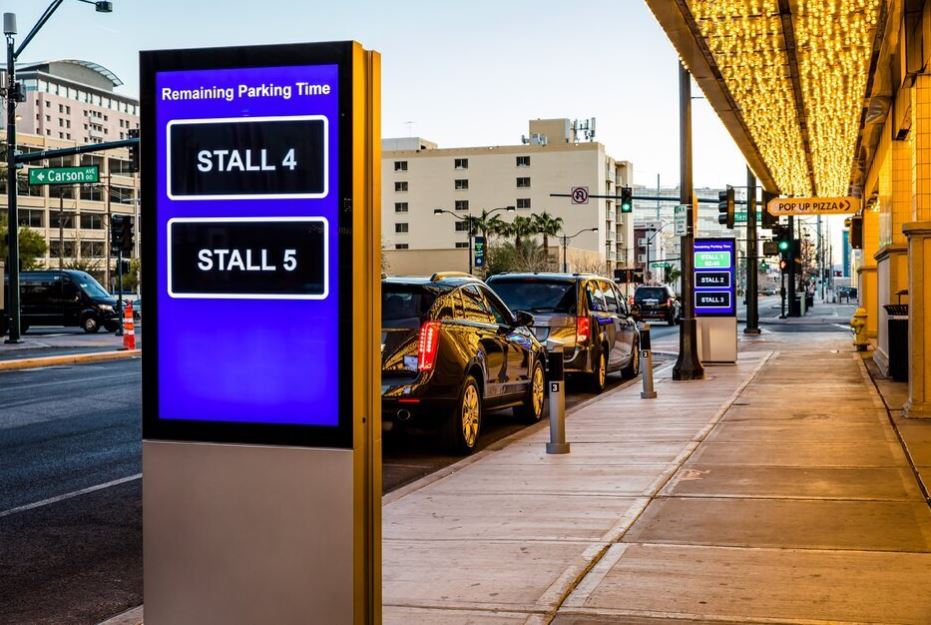
By Skip Descant
The near overnight rise of on-demand deliveries, as well as more standard fare e-commerce, has introduced new demands for city curbsides. Factor in the quick drop-off and pickup needs of Uber and Lyft, combined with the zippiness of scooters and bikes, and the curbside has never been busier.
The curb is an old part of every city ripe for innovation and new digital tech, say urban advocates.
In Las Vegas, Cox Communications has entered a pilot partnership with the city to introduce its Cox2M curb management system to help manage downtown congestion. Curbside kiosks collect video data, making vehicle type and license plate information to kickoff a countdown clock alerting drivers when they’ve spent too much time on a curb.
Another project in Aspen, Colo., established “smart zones” where delivery drivers use an app to book small delivery reservations. The technology, provided by Coord, has made for a smoother orchestration of goods coming into the city’s small downtown.
“The way we shop… is continually evolving. E-commerce is a dramatic shift,” said Anne Goodchild, professor of civil and environmental engineering at the University of Washington, speaking during the recent Urbanism Next conference.
“This changing nature is really challenging for urban planners. Because the built environment, and our governance structures have to adapt to these changes in behavior,” said Goodchild, noting that this becomes difficult when changes happen rapidly.
In Aspen, 11 popular loading zones were converted to the new smart zones, which the city charges $2 per hour to use. Nearly 120 delivery drivers have signed up to use the zones. The move has reduced congestion and double-parking, say organizers.
And in Las Vegas, where ride-hailing is rampant among the city’s millions of visitors, the Cox2M pilot hopes to improve the flow of drop-offs and pickups. If the vehicle remains on the curb after the countdown clock has run out, an alert is sent to the city.
“The technology package can be used to accomplish other goals such as commercial delivery access to the curb,” said Stephen Rusche, senior director for smart communities at Cox Communications.
Data is shared with the city via the Cox Smart Communities Platform, collecting data from the curb as well as pedestrian activity, “and is designed to adhere to city privacy, security and retention policies,” said Rusche in an email. “We envision this solution can be deployed to manage any active loading, unloading and delivery zone.”
As these types of projects become more common, data sharing and data standards — like Mobility Data Specifications (MDS) — are needed to better manage public right-of-way spaces, said Regina Clewlow, CEO and founder of Populus.
This mobility data allows cities to play a larger role as “mobility managers,” said Clewlow, in her remarks at the Urbanism Next conference.
“They can see real-time information about vehicles parked in the public right-of-way,” she added. “Fundamentally, without data, many cities were essentially blind to how their streets, curbs and sidewalks were being used by new fleet services. With data, they’re now empowered to create policies, and more quickly establish new infrastructure that’s cleaner, that’s safer, and that’s more equitable.”
Other cities like Columbus, Ohio and Omaha, Neb., have also embarked upon curb management initiatives that use technology. And if anything, the COVID-19 pandemic has accelerated the thinking around digital curb management as new demands like food deliveries and sidewalk dining are elbowing for space.
“Over the past couple of years, cities have very much accelerated their thinking on mobility management, and their implementation of new policies and adoption of new digital tools that empower them to deliver a future that’s more sustainable,” said Clewlow.